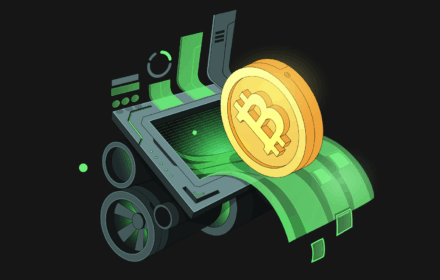Virtual currencies are rapidly conquering the world, offering new opportunities for investments and financial operations. The security of digital assets remains a key issue for many users. Cold crypto wallets have become one of the most reliable solutions for protecting digital assets.
### What Are Cold Crypto Wallets: Definition and Key Features

What is a cold wallet? This is a question that everyone who takes cryptocurrency storage seriously asks themselves. Cold crypto wallets are devices or software solutions that store private keys offline, significantly reducing the risk of compromise. Unlike hot wallets, which are constantly connected to the internet, cold wallets provide a higher level of security by isolating from potential online threats.
**Features:**
1. **Offline Storage**: Private keys never leave the device, preventing leaks.
2. **High Security Level**: Protection against hacking attacks and viruses.
3. **Types of Wallets**: Hardware wallets like Ledger and Trezor, as well as paper wallets.
Popular cold crypto wallets include Ledger Nano X, Trezor Model T, and KeepKey, which have proven to be reliable and convenient solutions for storing cryptocurrencies.
### How Cold Crypto Wallets Work: Technology
The operation principle of a cold wallet is based on using private and public keys to ensure transaction security. The private key is securely stored on the device and never leaves it, while the public key is used to receive funds.
When a transaction is made, the cold wallet signs it using the private key but does so offline. This means that even if the device temporarily connects to the internet, the private key remains protected. Blockchain technology ensures transparency and immutability of transaction records, while cryptographic methods guarantee that only the owner of the private key can control their funds.
Technical aspects of protection include the use of cryptographic hash functions, digital signatures, and consensus algorithms, making cold wallets one of the safest means of storing cryptocurrencies.
### Hardware Wallets
Hardware wallets are physical devices specially designed for storing cryptocurrencies. They provide a high level of security by isolating private keys from the internet environment.
**Advantages:**
1. **High Security**: Protection against online hacks and phishing attacks.
2. **Ease of Use**: Intuitive interface and convenient fund management methods.
3. **Support for Multiple Cryptocurrencies**: Compatibility with various digital assets.
Popular models include:
– **Ledger Nano X**: Supports over 1500 cryptocurrencies, equipped with Bluetooth for mobile device convenience.
– **Trezor Model T**: Offers advanced security features and supports multiple tokens.
– **KeepKey**: Known for its elegant design and ease of use.
When choosing a hardware wallet, it is important to consider factors such as price, functionality, compatibility with different cryptocurrencies, and the manufacturer’s reputation.
### Cryptocurrency Wallets: Comparing Cold and Hot Solutions
Cold crypto wallet or hot wallet – a dilemma faced by many users. Both types have their advantages and disadvantages, and the choice between them depends on specific needs and usage scenarios.
**Advantages of Cold Wallets:**
1. **Security**: High level of private key protection.
2. **Independence from the Internet**: Minimization of online threat risks.
**Disadvantages:**
1. **Less Convenient for Frequent Transactions**: Requires physical access to the device.
2. **Require Additional Devices**: Need to purchase and store a hardware wallet.
**Advantages of Hot Wallets:**
1. **Ease of Use**: Quick access to funds for daily operations.
2. **Integration Support**: Ability to use with various services and applications.
**Disadvantages:**
1. **Vulnerability to Hacks**: Constant internet connection increases security risks.
2. **Dependence on Services**: Potential reliance on service providers’ reliability.
### List of Popular Cold Crypto Wallets for Bitcoin and Other Cryptocurrencies
A cold wallet for Bitcoin and other cryptocurrencies offers a reliable solution for long-term storage of digital assets.
**Ledger Nano X:**
– **Features**: Bluetooth, supports over 1500 cryptocurrencies.
– **Price**: Around 120 USD.
– **Advantages**: High security, convenience of use with mobile devices.
– **Disadvantages**: Slightly expensive for beginners.
**Trezor Model T:**
– **Features**: Touchscreen, supports multiple tokens.
– **Price**: Around 170 USD.
– **Advantages**: Advanced security features, intuitive interface.
– **Disadvantages**: High cost compared to other models.
**KeepKey:**
– **Features**: Elegant design, integration with ShapeShift.
– **Price**: Around 50 USD.
– **Advantages**: Ease of use, affordable price.
– **Disadvantages**: Limited support for some cryptocurrencies.
**Coldcard Wallet:**
– **Features**: Specialized for Bitcoin, supports Air-gapped operations.
– **Price**: Around 100 USD.
– **Advantages**: Maximum security for Bitcoin.
– **Disadvantages**: Limited support for other cryptocurrencies.

### Conclusion
Cold crypto wallets play a key role in ensuring the security of digital assets, providing a reliable solution for long-term storage of cryptocurrencies. These formats demonstrate a high degree of protection and independence from the internet environment, making them a preferred choice for those who take the safety of their funds seriously.
Despite some inconveniences associated with their use, the advantages of cold crypto wallets are evident. Explore different types, choose the most suitable for specific needs, and ensure the maximum security of your cryptocurrency assets.
 en
en  ru
ru  de
de  ar
ar  es
es  nl
nl  hi
hi  fr
fr  it
it  pt
pt  el
el 



